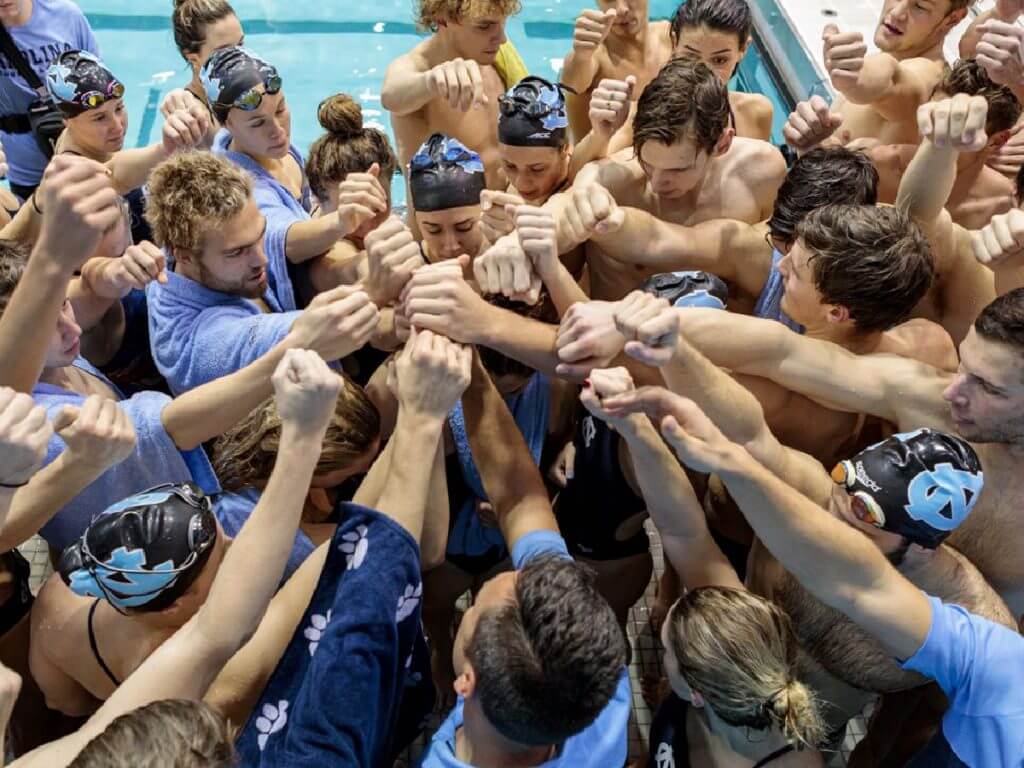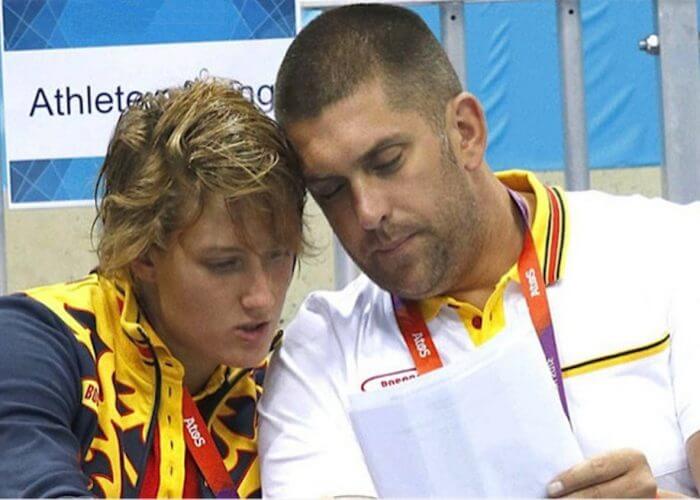Wellness Wednesday: 5 Strategies to Build Excellent Team Culture

5 Strategies to Build Excellent Team Culture
The cultivation of great team culture is critical to a team’s success. Anytime a swimmer is looking for a new swim team, it’s likely that one of their primary concerns will be how well the team gets along, as teamwork makes the swimming experience far more enjoyable. Although it can be a significant challenge to take a group of independently talented swimmers and create a team where they can merge their skills, being able to do so can be highly rewarding for everybody involved. With the implementation of the following strategies, the foundation of terrific team culture is right around the corner.
1. Encourage Feedback

Mireia Belmonte and coach Fred Vergnoux long before a time of social-distancing – Photo Courtesy: Natacio.cat
Throughout the season, it’s important to find ways to let athletes give honest feedback. When athletes know that their comments can be negative or positive, they will feel free to express their ideas and concerns without fear of being singled out. Don’t wait until the end of the season to do this, however. Getting team member feedback early on in the season as well as midway allows real, noticeable changes to take place well before the season concludes. An effective way to encourage honest feedback is to provide athletes with index cards and pens and allow them to turn their responses in anonymously.
2. Be Aware of Cliques
It can certainly be difficult to create a team culture where everybody is on the same page, and one phenomenon that can restrict this from happening is cliques. A clique is a group of people who share similar interests, spend a lot of time together, and do not readily allow new people with differing interests in. It’s easy to want to be with those we are most comfortable with, and this can be an issue when trying to build a solid team culture.
To help prevent cliques from taking over, team leaders should make an effort to keep combinations of teammates randomized. For example, pick room assignments for trips at random, choose swim partners by birth date, etc. This setup allows athletes to get to know other athletes who they may not have otherwise interacted with. To help athletes feel comfortable warming up to one another in these new social situations, ice breakers can also come in handy.
3. Volunteering
Taking part in volunteering events encourages team members to give back to the community while promoting the causes they care about most. Community service projects such as helping out a local food pantry, running a track meet, and helping run a charity walk not only bring teammates closer together but also help the community.
In addition to the satisfaction of making a difference, team members can enjoy other benefits that can be helpful in and outside of the pool. For example, volunteering can help boost mental recovery from all the time spent grinding away in the pool. As a result, athletes can return to the pool feeling more energized. Plus, volunteering allows swimmers to hone their leadership skills outside of the pool in a hands-on way. This can help them later on in life and throughout their swimming careers.
4. Team Social Outings
Not every effort to create an excellent team culture has to be serious or involve the learning of valuable lessons. After all, encouraging team members to do fun things together is a fantastic way to create positive memories and promote a better sense of camaraderie. Outings could be as simple as getting pizza together after a tough training session on a Friday evening, checking out the local park, or heading out to catch a newly released movie. Visiting local festivals and events is another fun option for a team outing.
Heading out together as a team encourages engagement in a more relaxed atmosphere. It also provides a great opportunity to bond and to get to know one another better on a personal level.
5. Create a Team-Oriented Squad
To make a team especially close and effective, it’s critical to make teamwork one of your core values. This includes ensuring that the team works well together, and one thing that can go a long way is empowering individual team members to make their own decisions. Rather than simply talking about “doing things as a team” in itself, it can help to allow different groups of swimmers to get specific jobs done on their own terms while ensuring that they accept responsibility for the results. For example, when a team has a group of distance swimmers who are committed to lifting together on their own, sticking to a specific schedule can be very powerful in terms of building a positive team culture.
All commentaries are the opinion of the author and do not necessarily reflect the views of Swimming World Magazine nor its staff.



